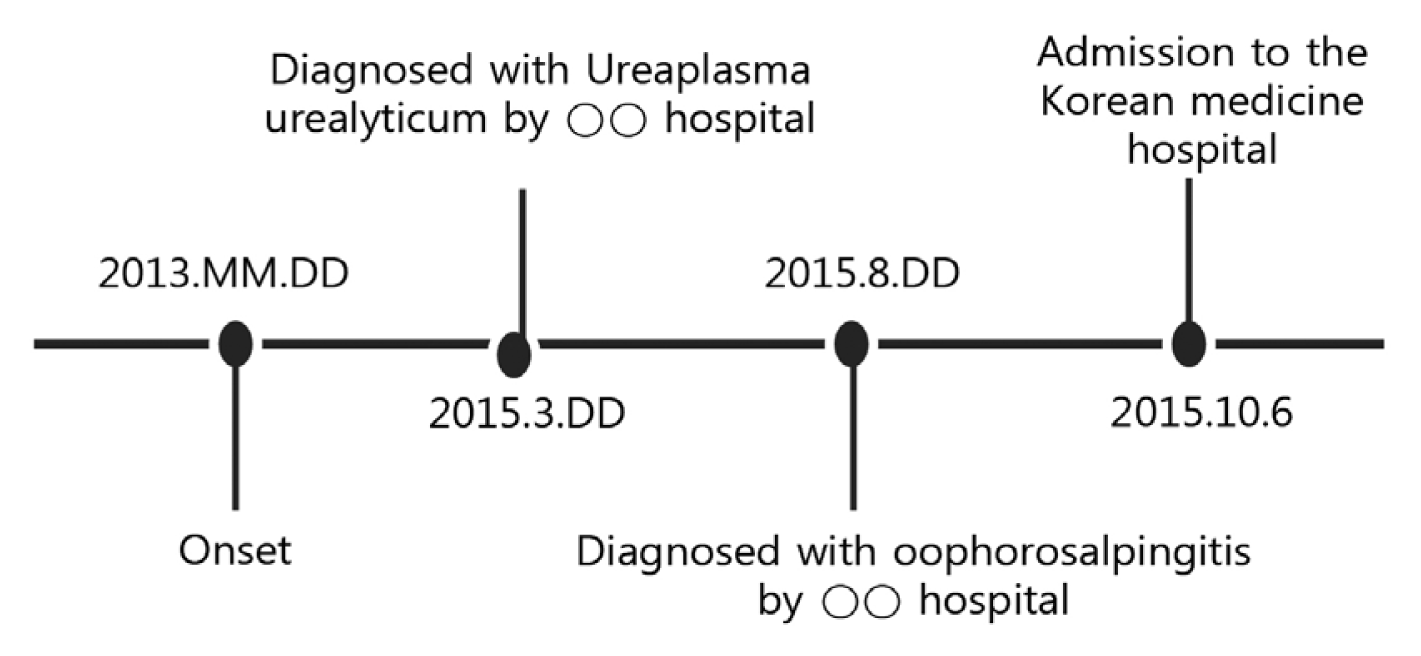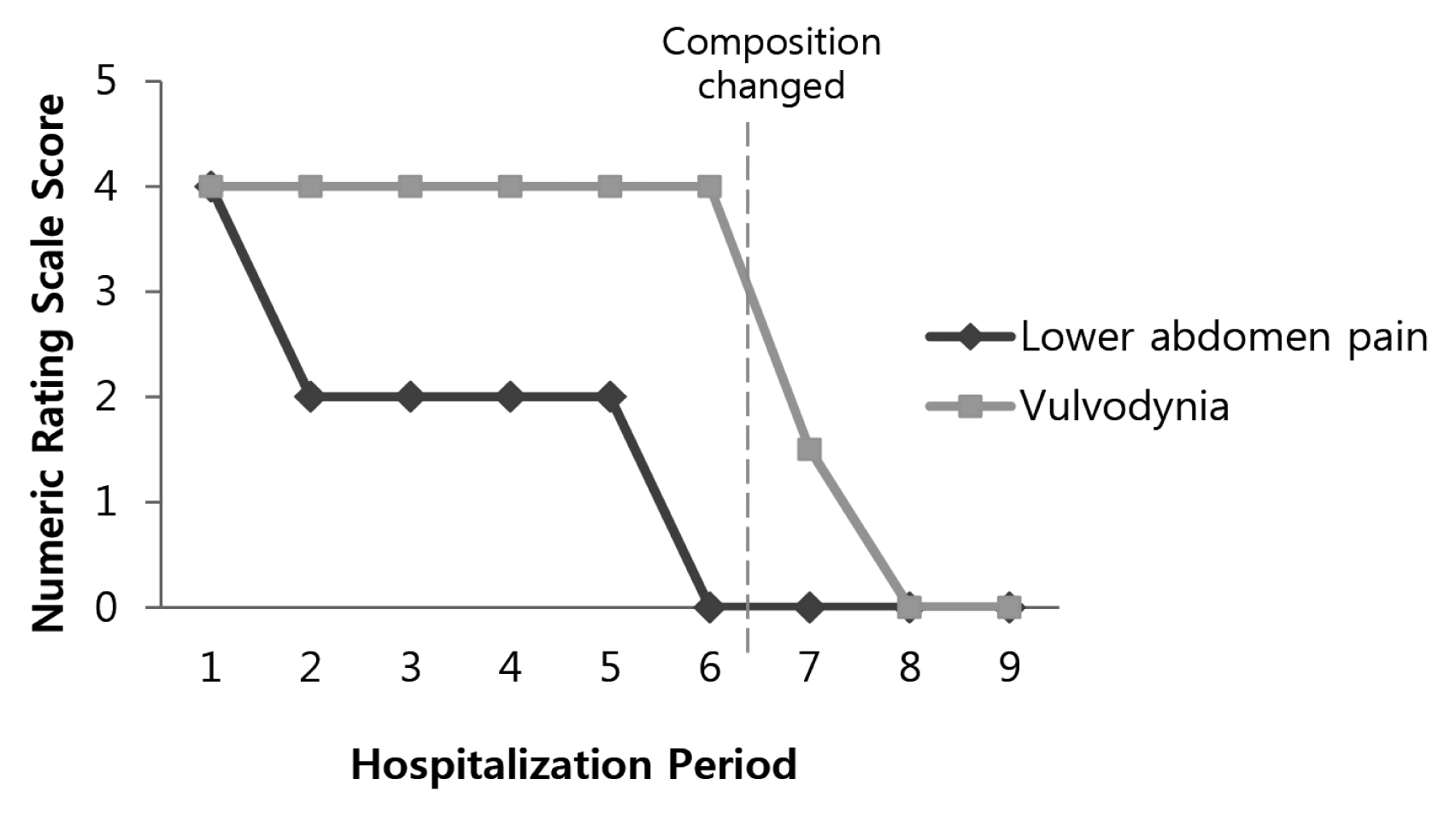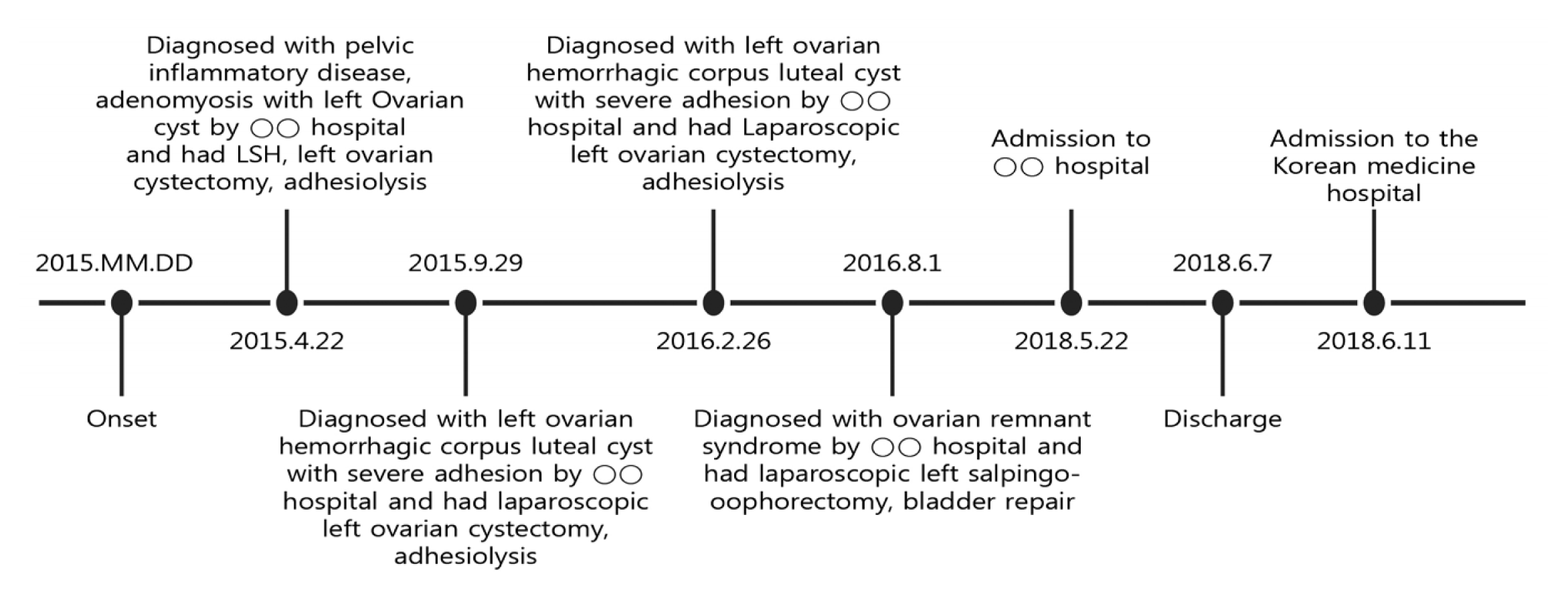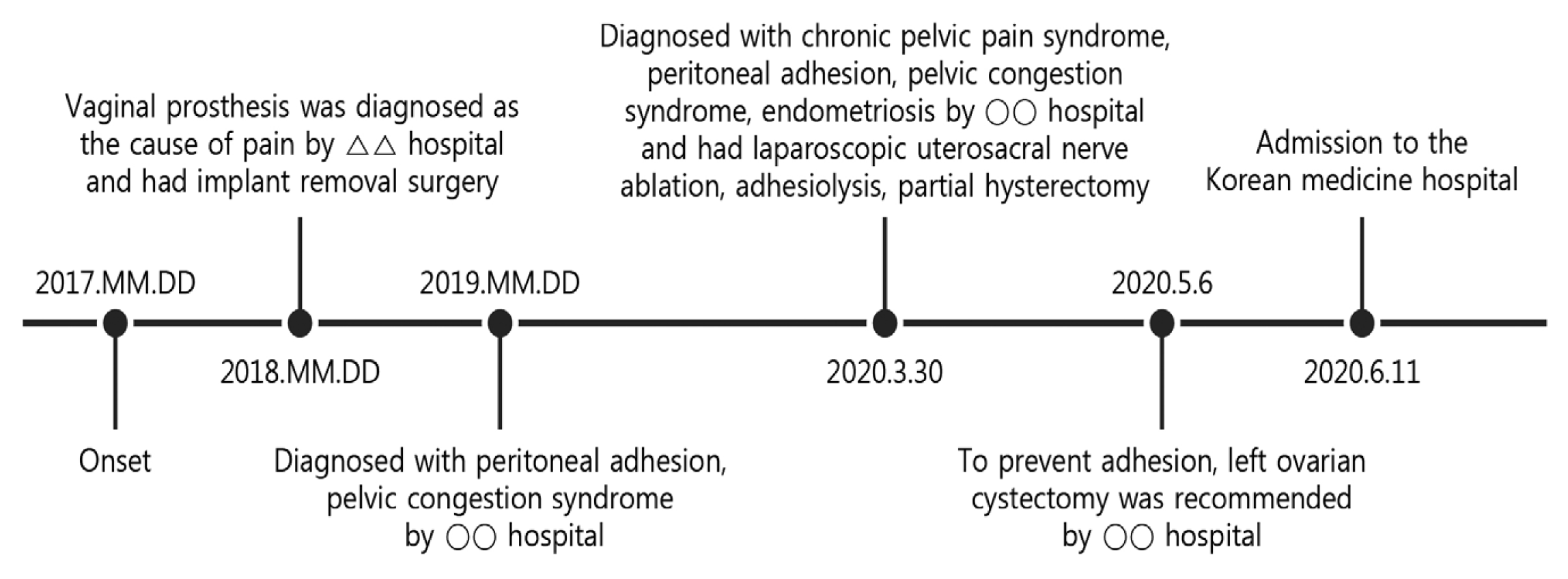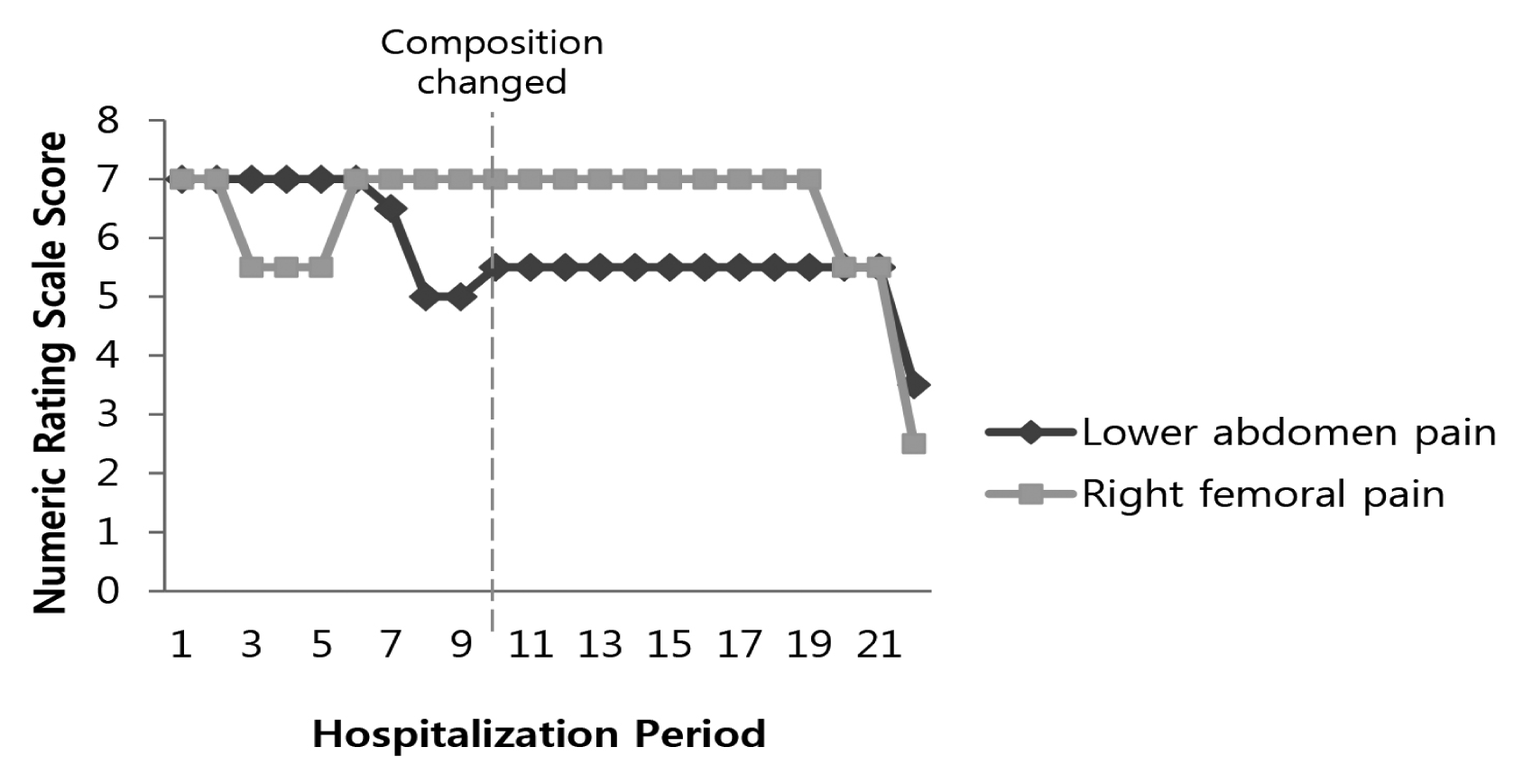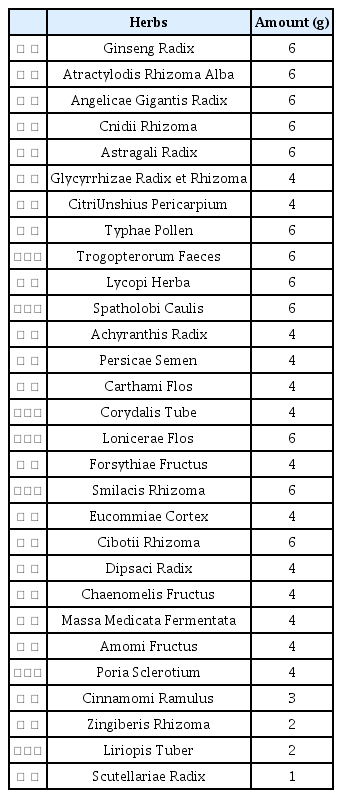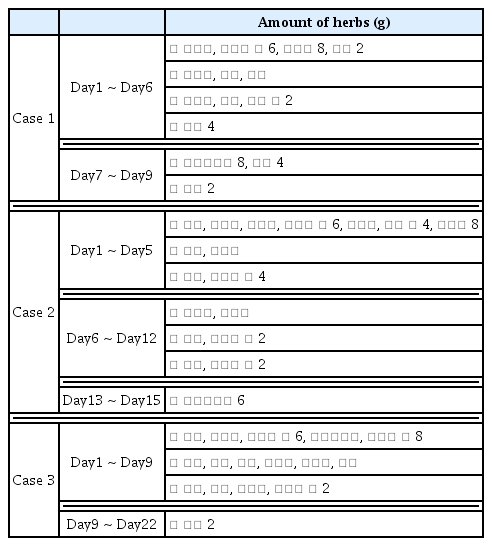References
1. American College of Obstetricians and Gynecologists Committee on Practice Bulletins. American College of Obstetricians and Gynecologists Practice Bulletin NO. 51. Chronic Pelvic Pain. Obstet Gynecol 2004;103(3):589–605.
2. Korean Society of Obstetrics and Gynecology. Gynecology 5th edth ed. Seoul: Goryueyuihak; 2015. p. 132–46.
3. Mathias SD, Kuppermann M, Liberman RF, Lipschutz RC, Steege JF. Chronic pelvic pain: prevalence, health related quality of life, and economic correlates. Obstet Gynecol 1996;87(3):321–27.
4. The Korean Society of Chronic Pelvic Pain. Chronic Pelvic Pain Seoul: Koonja publisher; 2013. p. 3–12.
p. 132–46.
p. 177–84.
5. Renaer M. Chronic pelvic pain without obvious pathology in women: Personal observation and a review of the problem. Eur J obstet Gynecol 1980;10:415–63.
6. Stones W, Cheong YC, Howard FM, Singh S. Interventions for treating chronic pelvic pain in women(Review). The Cochrane database of systematic review 2005;2:1–30.
7. Kim SY, Yoon JW. The Study on Chronic Pelvic Pain in Oriental and Occidental Medicine. Research Institute of Korean Medicine of Dongguk University 1996;5(1):15–31.
8. Lee TK. A Literature Review of Chronic Pelvic Pain. J Korean Obstet Gynecol 1997;10(17):111–9.
9. Kim JH, Kang NH, Chae MS, Hwang DS, Lee JM, Lee CH, et al. 6 Case Series of the Chronic Pelvic Pain by Korean Medicine Therapies. J Korean Obstet Gynecol 2015;28(2):143–55.
10. Yi YJ, Yang SI, Han IS, Park HJ, Bae SJ, Lee DN. Treatment of chronic pelvic pain and complications of post-ovarian cystectomy with laparoscopy: a case report. J Korean Obstet Gynecol 2006;19(4):287–97.
11. The Society of Korean Medicine Obestetrics and Gynecology. Oriental Obstetrics and Gynecology Seoul: Euiseongdang; 2012. p. 98–113.
12. The compilation committee of Gyunglak hyunghyulhak. Daehakgyunglakhyunghyulhakgakron sang, ha 6th edth ed. Daejeon: Jongryeonamu; 2012. p. 188–91.
p. 196–7.
p. 213–30.
p. 282–92.
p. 968–75.
p. 980–4.
p. 1093–9.
p. 1147.
13. Baek SE, Jang SB, Yoo JE, Choi KH, Yoo DY. Clinical Study for Three Cases of Hysterectomy Treated by Boheo-tang Gagambang with Acupuncture and Moxa. J Korean Obstet Gynecol 2015;28(3):119–27.
14. Yoon JW, Kim SJ. A Review of Clinical Study on Jungsongouhyul Pharmacopuncture Treatment Published in Korea. J Korean Med Rehabil 2017;27(4):75–84.
15. Lee C. Wonbon Pyenju Uihakipmun(Ha) Seoul: Namsandang; 1991. p. 2136.
16. Ju DG. Dangyesimbeopbuyeo Seoul: Daeseongmoonhwasa; 1982. p. 749–63.
17. The compilation committee of Herbology. Herbology 3rd edth ed. Seoul: Younglim publisher; 2008. p. 154–8.
p. 186–90.
p. 208–9.
p. 240–3.
p. 235–8.
p. 256–7.
p. 269–71.
p. 315–6.
p. 336–8.
p. 345–7.
p. 375–7.
p. 389–91.
p. 392–3.
p. 396–7.
p. 420–1.
p. 412–3.
p. 416–7.
p. 441–2.
p. 448–51.
p. 451–2.
p. 458–9.
p. 462–7.
p. 471–2.
p. 478–9.
p. 482–3.
p. 530–2.
p. 573–9.
p. 603–6.
p. 609–10.
p. 628–9.
p. 645–7.
p. 733.
18. Lim EM. Gynecological Herbology Seoul: Jeongukeuihaksa; 2005. p. 13–8.
p. 50–2.
p. 56–9.
p. 90p. 124p. 131p. 220p. 258–60.
p. 278–80.
p. 286–8.
p. 326–9.
p. 334–7.
p. 350–3.
19. DeSantana JM, Walsh DM, Vance C, Rakel BA, Sluka KA. Effectiveness of Transcutaneous Electrical Nerve Stimulation for Treatment of Hyperalgesia and Pain. Curr Rheumatol Rep 2008;10(6):492–9.
20. Lee BY, Song YK, Lim HH. Literature Investigation Regarding Cupping Therapy and Analysis of Current Professional’s Cupping Treatment. J Oriental Rehab Med 2008;18(2):169–91.

